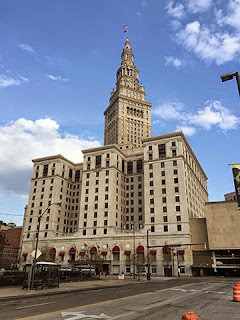A new and innovative urban design
solution looking for a problem is underway in many cities from San Francisco to
Philadelphia—the parklet. They have also found a place in Brazil and elsewhere.
They are nothing more than taking back the street from the car, one parking
stall at a time.
 This all started (or so claimed) in
2005 when a San Francisco design company took over a parking stall (by feeding
the meters all day) and installing a pop-up park with maybe 176 square feet of
sod, benches, and boxed trees. From this radical event it grew nationally until
2010 when San Francisco completed its first permanent parklet (and accompanying
manuals, guidelines, and nascent bureaucracy). A revolution began and cities
nationwide began exploring opportunities in their downtowns and high traffic
areas.
This all started (or so claimed) in
2005 when a San Francisco design company took over a parking stall (by feeding
the meters all day) and installing a pop-up park with maybe 176 square feet of
sod, benches, and boxed trees. From this radical event it grew nationally until
2010 when San Francisco completed its first permanent parklet (and accompanying
manuals, guidelines, and nascent bureaucracy). A revolution began and cities
nationwide began exploring opportunities in their downtowns and high traffic
areas.
This was not without some concern
by local businesses afraid to lose that one stall right in front of their door.
But cities used an interesting tactic; if the business (usually a coffee shop
or deli) was willing to “own” the parklet, they could use it to expand their customer
seats and directly affect their bottom line. Some businesses have even offered
to pay for the upgrades and improvements. Costs can run all over the place,
from remedial projects that cost $15,000 to sophisticated parklets that can run
two or three times that amount. Actually there is no limited to cost, only the
imagination.
The visual impact on the street
depends on the design, the more vertical the better. The most critical design
control is the street itself. To be a legitimate parklet, the street paving and
drainage remains intact. To start removing asphalt and realigning curbs changes
the result to a sidewalk improvement not a parklet. The goal is to be cost
effective while also dramatically changing the streets look and add to the
pedestrian’s experience. Amenities have included planter boxes, pots filled
with annual color, tables and chairs, benches, trellises, shade screens—the list
is almost endless.
 Some are sleek and modern, others
funky and very, very temporary looking, some have used salvage bins with a
bench crafted into the side, others have used shipping containers (cut-in
windows and doors). One was offered as a mini-golf course. Their primary reason
is to increase and expand the pedestrian use of the street.
Some are sleek and modern, others
funky and very, very temporary looking, some have used salvage bins with a
bench crafted into the side, others have used shipping containers (cut-in
windows and doors). One was offered as a mini-golf course. Their primary reason
is to increase and expand the pedestrian use of the street.
During the last hundred years the
automobile has increasingly demand more and more of the right of way. Wider
lanes, bike lanes, on street delivery zones, higher and higher parking rates,
it has been a constant war between motorists, bicyclists, and pedestrians. And
the car is winning—for now.
The climate on the West Coast and
the South favors the permanent installations of parklets. In snowy regions greater
concern is warranted and may require more temporary parklet solutions that get
setup each spring and removed in the fall. One distracted snowplow operator can
do a lot of damage.
The urban street a tough place. So
much going on, so much to offer, so much to lose. The more we can enliven and
“activate” the sidewalk and storefronts, the better the downtown.
Stay Tuned . . . . . . .





